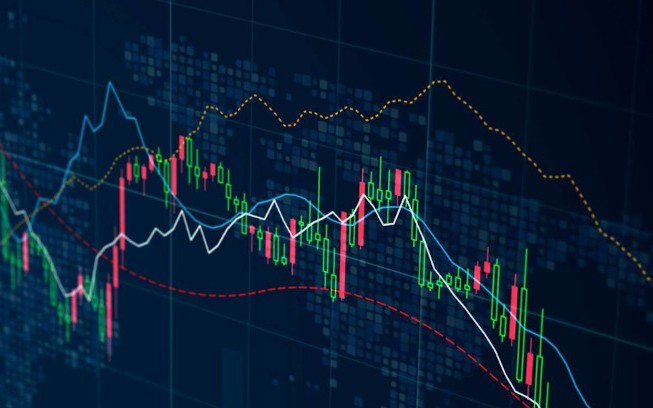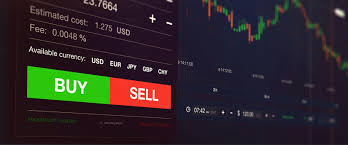
Forex Trading Beginner Guide: Start Your Journey Today
Forex trading is an exciting and potentially lucrative way to invest your money. If you’re just starting out, it might seem overwhelming. This guide will help you navigate through the fundamentals of forex trading, providing you with a solid foundation. Whether you’re interested in trading for fun or aiming to develop it into a full-time career, understanding the basics is critical. To enhance your trading experience, consider using a reliable forex trading beginner guide Trading App APK that can help you make informed decisions.
What is Forex Trading?
Forex trading, or foreign exchange trading, involves the buying and selling of currencies on the foreign exchange market with the intent of making a profit. As the largest and most liquid financial market in the world, forex trading takes place 24 hours a day, five days a week, allowing traders to engage in trading from anywhere in the world at any time.
Understanding Currency Pairs
In forex trading, currencies are traded in pairs, which means that when you trade one currency, you are simultaneously trading another. The first currency in the pair is known as the base currency, and the second is the quote currency. For instance, in the currency pair EUR/USD, the Euro (EUR) is the base currency and the US Dollar (USD) is the quote currency. The value of the currency pair indicates how much of the quote currency you need to purchase one unit of the base currency.
Major Currency Pairs
The most commonly traded currency pairs are called major pairs, which include currency pairs involving the US dollar (USD) and other major currencies such as the Euro (EUR), Japanese Yen (JPY), British Pound (GBP), Australian Dollar (AUD), Swiss Franc (CHF), and Canadian Dollar (CAD).
Minor and Exotic Currency Pairs
Minor pairs do not involve the US dollar, while exotic pairs consist of one major currency and one currency from a developing or emerging economy. These trades often carry higher risks due to lower liquidity and high volatility.
Choosing a Forex Broker
Selecting a reliable forex broker is crucial for your trading success. Here are a few factors to consider:
- Regulation: Ensure your broker is regulated by a reputable financial authority.
- Trading Platform: Look for a broker that offers a user-friendly and feature-rich trading platform.
- Currency Pairs Offered: Check if your broker offers access to a diverse range of currency pairs.
- Spreads and Commissions: Compare trading costs as they can significantly affect your profitability.
- Customer Support: Ensure the broker has reliable customer support to assist you when needed.
Developing a Trading Strategy
Having a well-defined trading strategy is vital for success in forex trading. A trading strategy helps you make buying and selling decisions based on specific criteria, reducing emotional trading. Here are some common trading strategies:
Day Trading
Day trading involves making multiple trades in a single day, aiming to profit from small price movements. Day traders typically close their positions before the market closes to avoid overnight risks.
Swing Trading
Swing trading aims to capitalize on price swings over days or weeks. Swing traders typically hold positions longer than day traders and use technical analysis to identify potential entry and exit points.
Position Trading
Position trading is a long-term trading strategy in which traders hold positions for weeks, months, or even years, relying on fundamental analysis and broader market trends rather than short-term price movements.

Understanding Technical Analysis
Technical analysis involves analyzing historical price data using charts and indicators to predict future price movements. Essential tools for technical analysis include:
- Charts: Line, bar, and candlestick charts are commonly used to visualize price movements.
- Indicators: Various indicators, such as Moving Averages, Relative Strength Index (RSI), and Bollinger Bands, assist traders in decision-making.
- Support and Resistance Levels: Identifying these levels helps traders understand where prices may trend upward or downward.
Risk Management in Forex Trading
Risk management is essential in forex trading to protect your capital and minimize losses. Here are some risk management tips:
- Use Stop-Loss Orders: A stop-loss order automatically closes your trade at a predetermined price to limit potential losses.
- Risk-Reward Ratio: Maintain a favorable risk-reward ratio to ensure potential profits outweigh risks.
- Diversify Your Portfolio: Don’t put all your funds into one trade; instead, diversify your investments across different currency pairs.
Emotional Discipline and Psychology in Trading
Emotional discipline plays a significant role in successful forex trading. Traders must manage their emotions to prevent impulsive decisions that can lead to losses. Some tips for maintaining emotional discipline include:
- Stick to Your Plan: Follow your trading plan and avoid deviating based on emotions or market noise.
- Accept Losses: Understand that losses are a part of trading, and don’t chase losses with revenge trading.
- Keep a Trading Journal: Documenting your trades helps you learn from mistakes and successes, improving your overall strategy.
Final Thoughts
Starting your journey in forex trading can be both exciting and challenging. By understanding the basics, developing a solid strategy, and practicing effective risk management, you can increase your chances of success. Remember to keep learning and adapting, as the forex market is dynamic and constantly evolving. With determination and the right tools at your disposal, you can make informed trading decisions and work towards achieving your financial goals.
